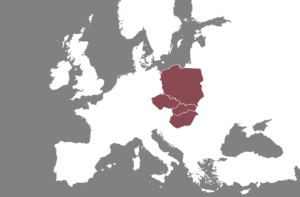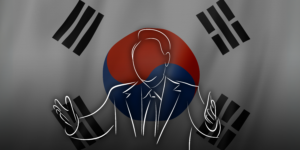With most of the economic reports predicting a significant contraction of Myanmar economy as much as 18% in the current fiscal year (Oct 2020-Sep 2021) following the February 2021 Military Coup, what matters for many families now is to be able to put food on their plates at the end of the day.
Lockdowns disguised as public holidays
Walking through one of the busiest residential neighborhoods, I hear nothing. The stillness is deafening — no street vendors, no shops open, people are inside their homes fearing to get infected with COVID-19. In an attempt to curb the spread of the disease, the State Administrative Council, as the junta calls itself, announced a public holiday initially for one week in July but have been extending it continuously since — each time for another one week. The rules are blurry — it is not a lockdown as many businesses and factories continue to operate, but all government departments, including electricity offices, various registration offices as well as schools, are closed. Many shops, however, closed voluntarily for this period to protect their employees from getting infected. It is hard to predict whether they will be able to reopen again once the health situation improves.
Around 1/3 of the country’s townships have been put under ‘stay at home’ orders, allowing one person per household to go out for essential business only, but these rules are not being followed, as the army does not have the capacity to enforce them. In Mandalay and some other cities, however, a strict lockdown allowing residents to go out only during certain time windows for essential shopping was imposed by the regional military units, with soldiers and junta-appointed administrators stationed at checkpoints and inspecting passerby’s phones and cars and motorbike toolboxes rather than health requirements. It’s believed they are using COVID-19 as an excuse to prevent demonstrations and impose a local administration control.
Prices of basic commodities rising
Rice, oil, eggs are the staple food items in Myanmar. Alongside vegetables and meat, market prices have sharply increased. In just five months, rice prices have risen by 13%, with more sharp increases in hard-to-reach areas (Rakhine, Kachin and Sagaing) and in areas of recent conflict (Chin and Kayah) — with prices rising more than 50%. Edible oil prices compared to pre-crisis are around 30% higher and egg prices have risen between 10 and 25%, depending on the region. Short supply, delays in transport (resulting in high spoilage), as well as high transport costs of perishable vegetables resulted in more than doubling of the average tomato price. On the other hand, inputs (seeds, fertilizers, pesticides) for the agriculture sector, which employs more than 50% of the population in Myanmar, have increased and are pushing more people into debt, making them worried about this year’s harvest.
Cash in high demand
Mobile banking, online payments, and e-wallets have only become available in recent years, as the country was heading towards significant reforms of its banking system. Now, with people’s personal funds deposited in banks and salaries transferred online to their accounts, money is stuck in the virtual (inaccessible) space. Nationwide protests following the military coup forced the private banks to close their branches for nearly three months, as the absence of most of the bank staff in support of the Civil Disobedience Movement made them impossible to operate. Once they reopened, customers flocked into the few open branches or queued for hours to withdraw cash from ATMs under the scorching sun. The shortage in cash liquidity has resulted in the Central Bank limiting the withdrawals to an equivalent of USD 300 per week, eventually decreasing that limit to around USD 100 per week in recent months. On top of the CB directives, the banks began imposing their own withdrawal restrictions to manage cash reserves.
At present, the number of ATMs that are being restocked has significantly decreased to a handful of randomly chosen ATMs in different locations every day. The customers queue from early mornings for many hours without any guarantee that they would be able to get cash once it’s their turn. The cash runs out after about 80-100 people withdraw up to the limit set per one customer. Many people, myself included, rely on shops accepting cards and mobile banking for daily necessities, as we haven’t been able to withdraw cash from an ATM for a few months — either the ATMs have been out of order, or restricted the use of cards issued by other banks, or run they run out of cash by the time I got there, or they haven’t been restocked on that day.
Myanmar’s currency has fallen nearly 20% against the US dollar since the coup, hitting new records every day. People running out of cash gave room to informal money brokers who would accept online transfers and hand out cash with a 7 to 15% commission.
Poverty and hunger growing
The World Food Programme estimates that people who could face hunger in the coming months will more than double — from 2.8 million people who were already unable to meet their food needs before 2021 to 6.2 million people. People are borrowing money, working odd jobs, and eating less just to feed their families. The situation is worse in urban and peri-urban informal settlements with little access to agriculture products that are available in rural villages. The UN predicts that people living below the poverty line will more than double before the end of 2021.
To fight food insecurity, citizen groups, volunteers, and charity organizations have started selling essential groceries for a price next to nothing — 5 Kyat (0.3 US cents). People in urban areas who depend on daily wages and have lost their jobs in the wake of the current health and political crisis, can at least temporarily relieve some of the stress on their shoulders to provide for their families. ILO estimates that more than 1.2 million jobs were lost in the first half of 2021, with construction, garments, tourism, and hospitality among the hardest hit sectors.
While there was optimism among people and signs of recovery among the businesses at the end of 2020 as the efforts of the government, community organizations, and volunteers were successfully managing the pandemic, six months after the military takeover coupled with the third wave of the pandemic, the economic recovery does not look probable. A recent survey of local businesses by the World Bank revealed that only 57% of businesses are confident to remain in business for the next month. In Yangon — the economic capital of Myanmar — popular dining spots remain closed, apartment buildings are adorned with big signs ‘for rent’, and half-built construction sites are collecting rainwater, haunted by ghosts of the once prosperously looking future.
For more up-to-date information about developments in Myanmar following the February coup d’etat, visit Myanmar Coup Tracker.








